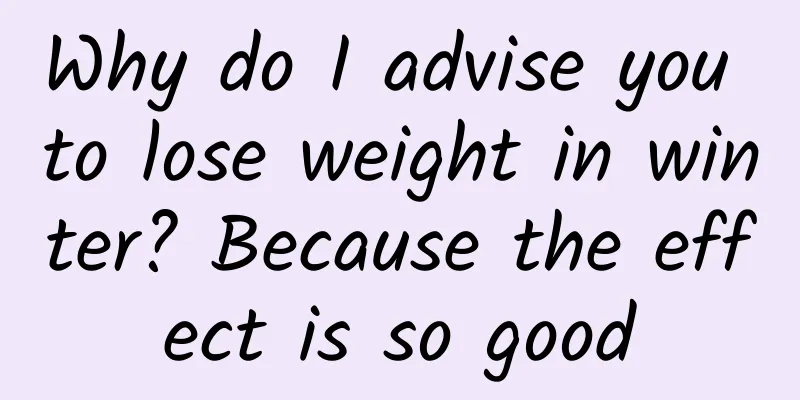How to do content operation well? 3 major elements!

|
Since I entered the Internet industry, I have been working as a product manager . Recently, due to work encounters, I have gradually been exposed to content operations work. Although I had some knowledge of content operations before, I had never been involved in it in depth. I have had a lot of feelings recently, and in this article I would like to share my gains in content operation. 1. Requirements for importing contentFirst, let me introduce my work background. Since we are not making a UGC product, the content on the platform is all introduced from third parties. If you're expecting to see how individual users can produce content, you're probably going to be disappointed. The content of our platform mainly comes from three directions: one is the company’s own production; the other is attracting external companies or institutions to settle in. This is also the practice of many PGC products. Company production is the basic guarantee for content, ensuring the quality and update frequency of content, and also ensuring that the content tone of the platform will not go astray. Attracting institutions or companies to settle in is conducive to expanding the scale of content. After all, if only relying on self-production, the speed of product development will be severely limited. The next thing to do is to decide what kind of content to introduce. There are two bases:
Let’s talk about the former first and identify the target audience of the product. Many people talk about user portraits . When mentioning user portraits, they think of user characteristics, such as gender, age group, occupation, hobbies, etc. But in reality, it is difficult for us to obtain this information, and it is impossible to create an account system to collect user information. To put it bluntly, even if you become a user, you are too lazy to fill it out, so most of the time you can only rely on external forces. At that time, we summarized two methods:
Find out what users like and determine the content direction. We try to continuously recommend different types of high-quality content, monitor the data of different content, analyze which content is popular with users and which content users dislike less, and then infer user preferences. To test user preferences with content, you need to prepare three things in advance:
Think clearly about your purpose. If your purpose is sales or if your purpose is purely based on user preferences, the data indicators to be evaluated will definitely be different. 2. Criteria for content evaluationAfter identifying the user group, we need to evaluate the quality of the content. I prefer to establish an evaluation mechanism. The advantage of doing this is that decisions can be made quickly on the evaluation of the content and differences among colleagues can be reduced. Therefore, everyone must reach a consensus on establishing such a mechanism, otherwise it cannot be implemented. Regarding the formulation of evaluation criteria, I would like to share some experiences: First, we need to determine the data indicators, such as playback or reading volume, revenue, etc. In fact, there are many more indicators to be calculated, such as the number of likes, downloads, etc. However, although some indicators have high data, they are not what we are pursuing, so there is no need to consider them. For content products that are mainly for making money, the most practical thing is income. Suppose we use income as a reference indicator to set standards. For example, we put a piece of content in a good position, set an expectation and time period, and if its revenue does not meet our expectations within this time period, we will remove it as being unpopular. But if it were just like this, it would be unfair to the content, and the operators would also feel it was a pity, especially since we spent a lot of effort on introducing some of the content. If a piece of content has poor data in the best position, when it is removed and placed in an ordinary position, the exposure will be much smaller and the data will definitely be worse. Therefore, in reality, we still need to save it. There are two main ways to save it:
If certain content also exists on a competitor's platform, you can use the competitor's data as a reference. However, there are three points to note:
These three factors will have a direct impact on the level of content data. 3. Criteria for content recommendationAssuming that you have introduced a lot of good content, the next thing you face is to select content from the content library and recommend it to users. Good resources on the platform are definitely very scarce, and if the resources are not used well, it would be a waste. For example, if you recommend content A in the same position, the daily income is 5,000, but content B only sells for 1,000. The 4,000 yuan in between is equivalent to our loss, which also reflects the good or bad use of the recommendation position. Therefore, it is important to screen the content properly, and there should also be a standard for choosing what kind of content to recommend. The standards for content recommendations are closely related to what was mentioned in the first section above. The reason why we need to understand user portraits and test user preferences is to improve the accuracy of content recommendations to users in the future. First, select some content that users like based on user preferences and content quality. But if we keep pushing what users like, the dimension will be too single and a lot of our content will be drowned out. Moreover, user preferences will also change, and the platform can guide users through good content. There is definitely a risk in pushing content that you know users don't like, and it will also result in losses in the short term. This will put some pressure on operators, but it is something that has to be done. When selecting content, you must promote some high-quality content. Otherwise, not only will it fail to guide users, but it will cause users to be disgusted. The second is to promote some content related to social hot spots based on social hot spots and the author’s popularity. If the author of the content is a big name in the industry, you can use the author’s fame to promote it. This is a recognized practice in the industry, so I won’t go into details. It sounds simple, but many times we cannot accurately predict the effect of recommending a content, and we are afraid that the effect will not be good and resources will be wasted. At this time, we can divide the recommendation positions into several levels according to the traffic . If you are unsure about the effect of a certain content, you can first test the waters by placing it in a less favorable location. Although the traffic of poor display positions is lower, there is still traffic after all. Wait until the test results come out. If the effect is good, you can put it in a better position. This method will be safer. This article was compiled and published by @云瑞you (Qinggua Media). Please indicate the author information and source when reprinting! Product promotion services: APP promotion services, advertising platform, Longyou Games |
<<: Seven Tips to Increase App Revenue (Part 1)
>>: The whole process of commercial live streaming monetization on Douyin (updated)
Recommend
Global annotation and graffiti
Ô´Âë¼ò½é ¿ ÉÒÔʵÏÖÈ«¾ÖÅú×¢£¬ÔÚÈκνçÃ涼¿ ÉÒÔ½«Åú...
This trendy "pet" actually solved the problem of the railway network that humans spent hundreds of years planning and designing!
Edit: April One day My colleague asked me mysteri...
8 golden marketing ideas, use them!
Ever wondered how companies like Apple or Nike be...
Let’s go to a concert and “see” the sound! Wait, does sound have a shape?
What is the shape of sound? Imagine that you are ...
Before the event starts, please warm up the event!
Good "activity preheating + hot spot leverag...
Is subsidy really a shortcut to user growth?
This year's Spring Festival, we still enjoy t...
A complete guide to shooting a product promotion video with 30w likes
In June, ByteDance responded to the news that Dou...
Xueersi Online School’s system of mentoring new students
Xueersi Online School is an online education bran...
Which platform has better promotion effect: Baidu, WeChat Moments, or Toutiao?
As the Wuhan epidemic gradually recedes, companie...
Which company providing SEO optimization services in Jiuquan is better? How to choose?
Nowadays, due to the increasing bidding costs, ma...
How does event planning create a hit?
Organizing activities is a good choice. It can in...
Why did Apple use the San Francisco font in iOS 9?
In the new product category of smartwatch Apple W...
Maybe the Apple Watch isn't for you
Along with the launch of a series of new products...
When a high-rise building is on fire, should you run up or down? Don't wait until tragedy happens before you know it.
Expert of this article: Yang Chao, PhD in Chemist...
Stop drinking fruit juice! It's almost like drinking sugar water, and all the nutrients may be wasted
In the eyes of many people, fruits are nutritious...









